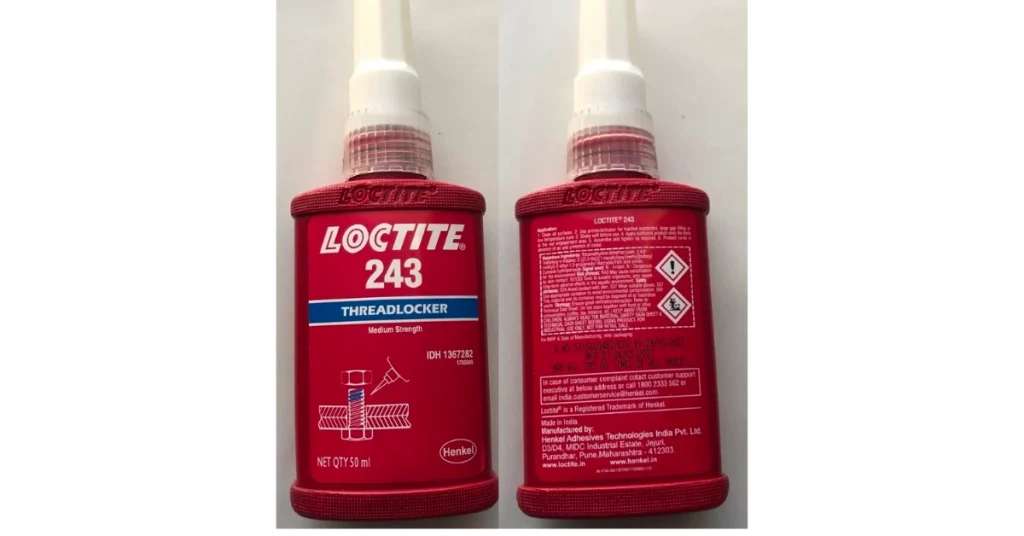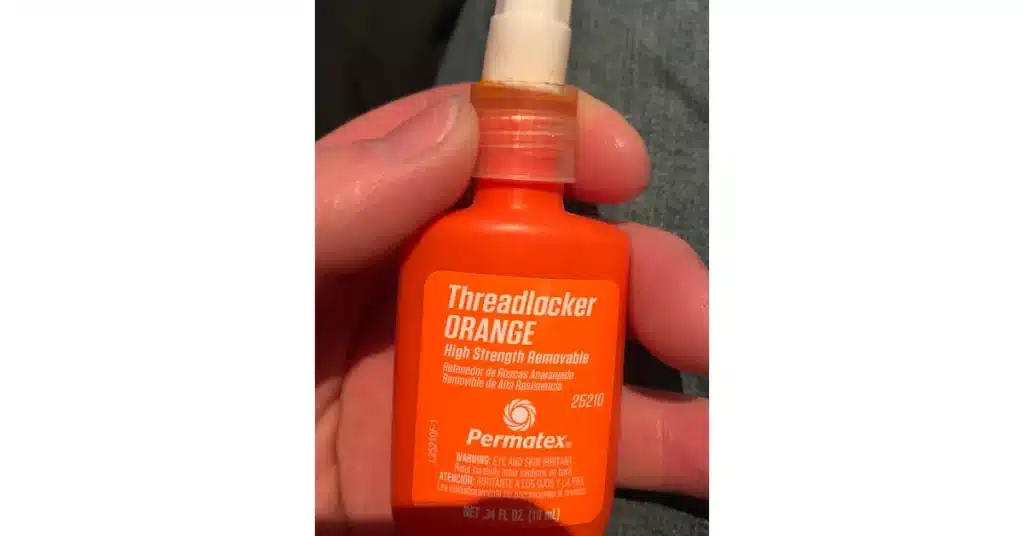Loctite offers various types of glue in multiple segments that fit your purpose. In their catalog, Loctite has threadlockers, instant adhesives, contact adhesives, and more. Furthermore, in each of these categories, Loctite offers multiple products.
Blue Loctite is one of the most common colors for Loctite adhesive, and they are in medium strength and are removable using torque. Orange is not a common color for Loctite products, but there are a few available options. So, in the battle between Orange Loctite vs. Blue, which one should you side with and why? I’ll review the features and specifications of Orange and Blue Loctite and how they differ.
Read More: Loctite Blue vs. Red
Orange Loctite vs. Blue

Overview of Orange Loctite
Loctite threadlockers are offered in 4 different colors – Blue, Green, Red, and Purple, so Orange is not a common color of threadlocker from Loctite. That being said, there are a few products from Loctite that come in Orange, as the Loctite 266 comes in Red-Orange.
Loctite 266 is red-orange in uncured form and is positive under fluorescence light. It is a high-strength threadlocker that can withstand temperatures up to 232°C. Since it is a heavy-strength threadlocker, you can use it for various industrial and heavy-duty applications.
Similar to other Loctite threadlockers, the 266 provides enhanced protection against common contaminants and is resistant to shock and vibration.
Loctite 574 is one other Loctite product that comes in Orange. The 574 is a general-purpose Gasketing product that you can use to seal close-fitting joints in rigid metal faces or flanges. The 574 provides excellent protection against contaminants and industrial oils. Furthermore, the 574 also has high resistance against water and glycol. You can use the 574 for pump housings.
Read More: Orange Loctite vs. Red
Overview of Blue Loctite
Blue Loctite is one of the most common colors for Loctite threadlockers, and you have multiple available options to choose from. Some of the most popular Blue Loctite are – Loctite 242, 243, and 248.
Blue Loctite works well with all metals and most standard substrates like – Stainless Steel, Steel, Brass, and more. Furthermore, Blue Loctite is also tolerant to minor contamination on the surface from industrial oils like cutting, lubrication, anti-corrosion fluids, and other contaminants.
Blue Loctite are medium-strength threadlockers, and you can remove threaded fasteners you used it on by applying torque using standard tools found around the house. Blue Loctite is versatile when it comes to practical uses, and you can use them for various purposes around your house, office and for mechanical components. You can use Blue Loctite for pumps, car/truck parts, and more.
Blue Loctite is tolerant to vibration and shock, and you can use it for components that go through constant vibration or have the risk of being exposed to shock. Loctite 248 is one of the popular Blue Loctite threadlocker, and you can use it for studs of your pumps or gearboxes.

Read More: Yellow Loctite vs. Blue
Differences Orange Loctite And Blue
Now let’s examine how Orange Loctite and Blue Loctite differ.
Glue Strength and Removal
Orange Loctite threadlockers are high strength threadlockers. You can use Orange Loctite for heavy-duty or industrial applications. Once you apply the threadlocker, you need localized heat and solvents to remove it. For example, once you apply Loctite 266, if you plan to remove it after curing, you need to apply localized heat and use solvents for removal.
On the other hand, Blue Loctite threadlockers come in medium strength. You can use Blue Loctite for various components around your house, office, mechanical components, or automotive parts. You can remove Blue Loctite using hand tools and applying torque.
Available Options
Orange is a rare color for Loctite products, and there are only a few available options in the market. Some of the options are – Loctite 266 – a high-strength threadlocker, and Loctite 574 – a general-purpose gasketing product.
On the other hand, Blue is a common color for Loctite threadlockers, and you’ll find various Loctite Blue products in the market. Some of the most notable ones include – Loctite 242, 243, 248, and more. Blue Loctite is available for various thread sizes and in various viscosities.
Last Opinion
So, in the debate between Orange Loctite vs. Blue, which one should you side with? It depends on you and your specific needs since they suit different purposes. Loctite Blue threadlockers are an excellent pick if you need to disassemble your components later.
On the other hand, you can go for Orange Loctite if you need a more permanent option. Red Loctite can also be a good alternative.

